Positive Scenario I
Gregory ShtraksIt has been more than two years since the Ukraine crisis ushered in a new era in Sino-Russian relations. Many analysts argue that the Sino-Russian rapprochement began much earlier than 2014, but it is undeniable that 2014 was a watershed year. Since that time, the nascent partnership has experienced both ebbs and flows, as the expectations from 2014 clashed with the dreary realities of 2015. Last year, Sino-Russian trade fell by almost 30%, and China has been in no hurry to replace the West as the paramount investor in various Russian economic sectors. Nonetheless, important steps towards a closer economic and political union are being made. Looking at the situation from the perspective of those in Russia and China who want a closer relationship between the two, this article paints a positive scenario for the evolution of Sino-Russian relations, bilaterally, regionally, and globally over the next two years.
Sino-Russian Bilateral Economic Cooperation: Two Steps Forward, One Step Backward?
The precipitous drop in Sino-Russian trade in 2015 should not be taken as a sign of trouble. After all, Russia’s exports to Europe dropped by 13.2% and imports dropped by 14.5%; trade with Japan dropped by 18%; trade with Brazil by 16%; and trade with Australia by 21%.1 China is Russia’s largest trading partner, and there is no doubt that a drop from $95.3 billion in 2014 to $68 billion in 2015 was painful to the Russian economy. This, however, was largely due to the precipitous drop in the price of oil.2 Conversely, the Sino-Russian trade in agricultural products grew by 23% in 2015, whereas chemical products trade grew by more than 8%.3 It is unlikely that Russia and China will achieve the desired rate of $200 billion in bilateral trade by 2020, but with the construction of the “Power of Siberia” gas pipeline, projected to be finished by 2018, and a slight rebound in the price of oil, bilateral trade should reach $100 billion by then.4
Also important for bilateral economic relations is Chinese direct investment in Russia and credit provided by Chinese banks. Any positive scenario for the immediate future of Sino-Russian relations would involve Chinese businessmen filling the gaps left by the departure of Western investments and credit. However, China has been reluctant to release credit to Russia; its banks lack the expertise in Russia and are extra cautious due to Western economic sanctions. Overall, Chinese credit to Russia grew from a meager 0.6 billion in 2012 to over 18 billion in 2015.5 Nonetheless, that was not nearly enough to replace the gush of Western credit flowing out of Russia.6 Moreover, most of the Chinese credit came from the two political banks—the China Development Bank (CDB) and the Export-Import Bank of China, whereas many of the smaller Chinese banks with ties to Western markets refrained from engaging with Russia.7
Nonetheless, the vacuum created by the withdrawal of Western credit will, sooner or later, benefit Sino-Russian relations. Zhongnanhai has been supportive of Chinese banks and companies that are interested in investing in Russia, and it is just a matter of time until the right structures emerge to circumvent Western sanctions. For example, the newly formed Sino-Russian intergovernmental commission on investment, co-chaired by First Deputy Prime Minister Igor Shuvalov and Politburo Standing Committee member Zhang Gaoli, has been instrumental in securing Chinese investment in large-scale bilateral projects.8 Gennady Timchenko, a close friend of Vladimir Putin and a majority investor in Yamal LNG, chairs the Russian-Chinese Business Council. It is, thus, no coincidence that China’s Silk Road Investment Fund (created to fund the “One Belt, One Road” initiative) recently purchased 9.9% of Yamal.9 It is likely that, in the immediate future, more investments will come through China’s ambitious “One Belt, One Road” initiative with the high speed railroad from Moscow to Kazan being the most shovel-ready. The financing for this project will probably be announced during Prime Minister Li Keqiang’s visit to Moscow later this year.10
Since it is highly unlikely that the West will lift sanctions on Russia within the next two years, China and Russia will have plenty of time and room to maneuver in their emerging economic partnership.11 We are at the dawn of massive Sino-Russian economic cooperation that may become one of the most important geopolitical developments in the 21st century.
A Farewell to Russia’s Worries about Selling Arms to China?
Many Western observers have noted the re-emergence of Russia’s arms sales to China. The arms trade grew exponentially between 1991 and 2006, but suddenly dried up as Russia’s military, flush with new investments from state coffers, no longer needed China’s funds, and worries about Beijing’s intentions outweighed the desires for profit.12 It appears that those worries have now been put to rest. In 2014, Russia agreed to sell the S-400 Triumph air defense missile complex, which NATO calls the SA-21 Growler.13 Then, in 2015, Russia and China signed a $2 billion deal for the sale of 24 Su-35 fifth-generation fighter jets.14 It is likely that the next two years will witness more major arms sales, dealing with advanced submarines to tanks. On China’s side, Beijing has stepped up in providing Russia with necessary technology for space exploration and satellite launches that has been unavailable to Moscow due to sanctions.
Arms sales are just the tip of the iceberg in emerging Sino-Russian military cooperation. Joint naval exercises in the Mediterranean (2015) and the South China Sea (2016), as well as “anti-missile war games” (2015), have built bridges between the People’s Liberation Army (PLA) and the Red Army. More drills are expected in 2017 and 2018. Vast areas for collaboration in intelligence sharing and cybersecurity remain open. A Sino-Russian entente in these clandestine cyberwarfare areas is still unlikely, but it would not be surprising if the seeds for such an enterprise are already being sown.
Booming Synergies in Public Diplomacy?
A quiet revolution has been happening in Sino-Russian people-to-people relations. Russia is flush with Chinese tourists, who are taking advantage of the weak ruble and Russia’s proximity to visit Moscow, St. Petersburg, and Vladivostok.15 More and more Russians are studying Chinese, and student exchanges have been slowly expanding over the last decade.16 It appears the public diplomacy initiatives by China in Russia and by Russia in China are also working. In March 2016, 78% of Russians had a favorable opinion of China (as compared to 57% in June 2013).17 In fact, 2016-2017 has been labeled the China-Russia Media exchange year.18 Networks of governors, mayors, and other civil servants are also being established between Russia and China. Such initiatives are often overlooked, but, in the long term, form the core of a successful, national partnership.
A New Eurasia?
In watching the evolution of Sino-Russian relations over the next two years, no area is more important than the consolidation of the Eurasian Economic Union (EEU) with the “One Belt, One Road” initiative (OBOR). Right now Russia and China are trying to connect the two projects by exploring different venues for finding and identifying investment projects, particularly logistics and infrastructure projects that would increase connectivity. Another focus is increasing trade by establishing a free trade zone or an economic partnership that would enable and facilitate trade. The merging of OBOR and the EEU is a long-term initiative, but it should begin to bear fruit over the next two years.
The Shanghai Cooperation Organization (SCO) is another arena with much potential for growth.19 India and Pakistan became full members this year, and Iran is poised to be accepted as well.20 The SCO is still largely viewed as a China-dominated enterprise, but Russia is also a founding partner and has become more open to making the SCO a vehicle for an economic partnership, beyond a security cooperation organization. The establishment of an SCO development bank by 2018 would be a big step in making the organization an increasingly relevant institution.
Brothers in Authoritarian Arms
Perhaps, the most important factor in bringing Russia and China closer together is their shared commitment to maintaining an authoritarian political system and limiting foreign influence at home. Both Moscow and Beijing are currently sailing through stormy political waters. China’s economic slowdown is eroding the viability of the Communist Party, while Russia’s recession threatens Putin’s stranglehold on power. The summer of 2018 will witness Russia hosting the World Cup. The world’s eyes will, once again, fall on the Russian Federation. If newly re-elected Putin watches the games from a podium alongside newly re-elected Xi, then the political stability in Russia and China will be preserved, and the authoritarianism will remain the key element in the national identity of both Russia and China, helping to cloak other differences. This will surely be a positive scenario for the elites, if not the people, of Russia and China.
1. Aleksander Lukin, “Povorot Rossii k Azii: Mif ili real’nost’’?” Mezhdunarodnaya Zhizn, https://interaffairs.ru/jauthor/material/1468
2. Alexander Gabuev, “Friends with Benefits? Russian-Chinese Relations after the Ukraine Crisis” Moscow Carnegie Center,http://carnegie.ru/2016/06/29/friends-with-benefits-russian-chinese-relations-after-ukraine-crisis/j2m2
3. Aleksander Lukin, “Povorot Rossii k Azii.”
4. Anna Tikhonova, “Sweet-and-Sour Sino-Russian Gas Project,” Russian International Affairs Council, http://russiancouncil.ru/en/inner/?id_4=7330#top-conten
5. Brian Yeung, “Sino-Russian partnership needs reform for successful transition,” Russian International Affairs Council, http://russiancouncil.ru/en/blogs/dvfu/?id_4=2250
6. “Credit squeeze leaves Russian companies facing bleak 2015,” International Business Times, January 29, 2015, http://www.ibtimes.co.uk/credit-squeeze-leaves-russian-companies-facing-bleak-2015-1485715
7. Alexander Gabuev, “Friends with Benefits?
8. Alexander Gabuev “Russia’s Policy towards China: Key Players and the Decision-making Process,” The Asan Forum3, no 2 (2015).
9. Sergei Luzyanin and Zhao Huasheng, “Russian–Chinese Dialogue: The 2016 Model,” Russian International Affairs Council, http://russiancouncil.ru/en/inner/?id_4=7733#top-content
10. Greg Shtraks, “An Interview with Alexander Gabuev: China’s One Belt, One Road Initiative and the Sino-Russian Entente,” National Bureau of Asian Research, http://www.nbr.org/downloads/pdfs/psa/gabuev_interview_08082016.pdf
11. Brian Yeung, “Sino-Russian partnership needs reform for successful transition”, Russian International Affairs Council, http://russiancouncil.ru/en/blogs/dvfu/?id_4=2250
12. June Teufel Dreyer, “China and Russia: The Partnership Deepens,” Foreign Policy Research Institute, http://www.fpri.org/article/2016/01/china-and-russia-partnership-deepens/
13. Paul Schwartz, “China, Russia defense relations intensify,” The Asan Forum 3, no. 6 (2015). Also see Vaily Kashin “Vladimir Putin’s Visit to China: No High Expectations, Concrete Results,” Russian International Affairs Council, http://russiancouncil.ru/en/inner/?id_4=7852#top-content
14. “Zachem Kitai kupil u Rossii novye istrebiteli,” http://carnegie.ru/commentary/2016/02/02/ru-62640/itfn
15. Andrew Higgins, “Vladivostok Lures Chinese Tourists (Many Think It’s Theirs),” The New York Times, July 23, 2016, http://www.nytimes.com/2016/07/24/world/asia/vladivostok-china-haishenwai-tourists.html; also see Anastasia Bazenkova, “West turns away,” The Moscow Times, June 9, 2015, https://themoscowtimes.com/articles/russia-lures-chinese-tourists-as-west-turns-away-47271
16. Larissa Smirnova, “Cooperation in Science and Education to Promote an Innovative Approach to Russia–China Relations,” Russian International Affairs Council, http://russiancouncil.ru/common/upload/Russia-China-Education-Policybrief3-eng.pdf
17. Alexander Gabuev, “Friends with Benefits?”
18. June Teufel Dreyer, “China and Russia”
19. Greg Shtraks, “SCO-BRICS: The Big Summit in Ufa,” The Diplomat, June 8, 2015, http://thediplomat.com/2015/06/sco-brics-a-big-summit-in-ufa/
20. “Spotlight: ‘Shanghai Spirit’ draws new members to join SCO,” Xinhua, June 22, 2016, http://news.xinhuanet.com/english/2016-06/22/c_135457873.htm

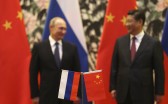
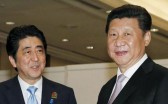
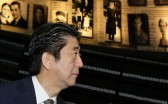
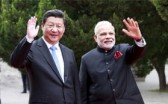
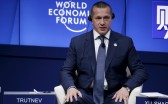
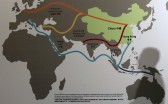


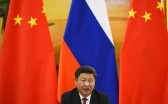
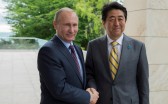
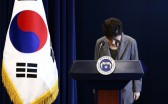
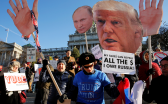
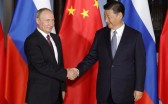
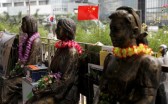
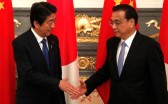
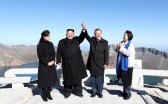
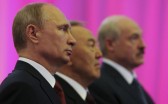
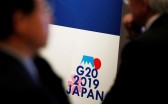


 Print
Print Email
Email Share
Share Facebook
Facebook Twitter
Twitter LinkedIn
LinkedIn